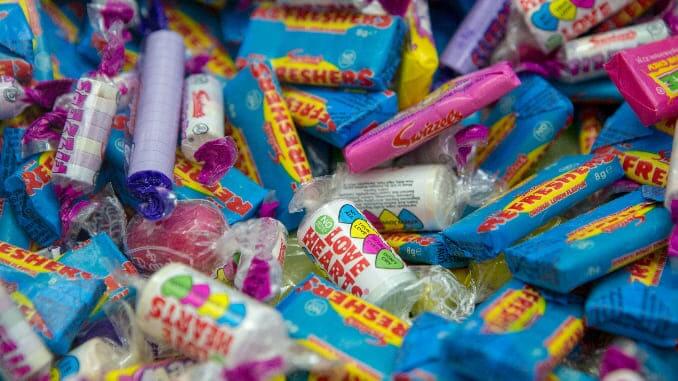Every year, local news stations put out the same old dubious warnings about Halloween candy that’s been poisoned or tampered with. Watch out! You may find a razor blade in your child’s Snickers bar. Be alert! You never know who’s going to sneak some cocaine into that Fun Dip. And now, even more outlandish stories of tainted Halloween goodies pop up on social media every year, making some parents question if they should even let their kids leave the house, let alone knock on a stranger’s door.
You don’t have to do much research to come to the conclusion that these claims are almost entirely implausible. Most importantly, they just don’t make much sense: Why would someone who’s doing drugs want to give their drugs away to some random kid? Drug-induced crime generally involves the user trying to get more of their substance of choice, not trying to get rid of it in the most sadistic way possible.
So, why does this myth continue to proliferate? Why do we continue to see the same old tired claims being repeated every Halloween?
The incidents that these fears are based on mostly took place in the ‘70s and ‘80s, an undoubtedly tumultuous time in American history. There were several stories circulating at the time that spurred widespread concern about tainted Halloween candy. One involved a father who actually did poison and kill his son with a pixie stick. Another involved a five-year’s death after he consumed heroin that was thought to come from his Halloween candy (but which actually came from a stash at his uncle’s house).
And yet, numerous investigations have found that incidents of children encountering razor blades, drugs or any other dangerous substance in Halloween candy are practically, if not actually, nonexistent. Most strangers—even the ones who do terrible things—are not interested in poisoning other peoples’ kids.
Some, including W. Scott Poole for CNN, argue that the Halloween candy moral panic has historically been a symptom of social and political upheaval. He writes, “The false case of the poisoned candy legend is another way that American fears manifested: as an easily understood threat to innocence.” As Nixon was impeached, as inflation shook the economy, as the country shed a layer of skin to become what it morphed into in the late ‘80s and ‘90s, solidifying the reign of the capitalist hellscape in which we now reside, poisoned Halloween candy functioned as a metaphor: Americans were starting to lose their innocence about their place in the world, and there was nothing they could do to stop it. However, they could prevent their kids from going trick-or-treating, carefully inspect every piece of candy before letting them dig into their treats and even resort to X-raying miniature Almond Joys.
As with most conspiracy theories, the poisoned Halloween candy myth can offer people a sense of control: Something bad is happening in the world, and here’s what you can do to stop it. Once again, this country is going through a period of massive upheaval. Facing down rapidly increasing wealth inequality, attempting to survive a norm-shattering pandemic and contending with our country’s frightening foray into unchecked, politically backed racism and misogyny is not as simple as looking for a razor blade in a Kit Kat bar. But it’s important, while examining our fears and our anxieties, that we do not go so far inward that we can no longer perceive the chaos happening around us, outside of our small individual worlds. We as a culture must learn to embrace and cope with societal anxiety in a way that actually addresses our problems instead of deflecting them.
The myth of the tainted Halloween candy, like so much of our political rhetoric, asks us to mistrust our neighbors, strangers to so many of us. It makes us think of evil as a phenomenon that happens mostly on an individual level and distracts us from the reality that much of the harm we as a country are suffering comes from the institutions that claim to serve us. Technically, yes, your child is getting poisoned by their Halloween candy—it’s just through the slow normalization of ultra-processed, objectively unhealthy snack foods pushed onto the market by corporations that have lobbied themselves out of sensible nutritional regulations, not your neighbor three doors down who has an unexplainable urge to swap your kid’s Sour Patch Kids with cannabis edibles.
By feeding into these fears, we further alienate ourselves from the people we should be building community with—community that is becoming more and more essential as large-scale institutions become increasingly inept at (or actively hostile to) providing people what they need to live safe, healthy, dignified lives. Halloween is an opportunity to connect with neighbors and share food, which is, arguably, what we should be doing throughout the entire year. Let’s take advantage of it.
Samantha Maxwell is a food writer and editor based in Boston. Follow her on Twitter at @samseating.
